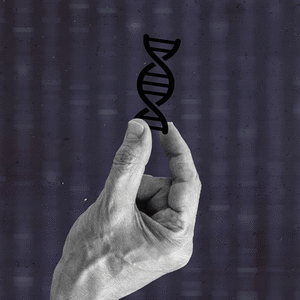In most fields of science, it would be a serious conflict of interest to prefer some study subjects over others. But practically everyone in Elaine Ostrander’s lab at the National Human Genome Research Institute (NHGRI) plays favorites, in ways that even bleed into their personal lives.
“Everyone in my lab has a dog,” Ostrander told The Daily Beast recently from her office in Bethesda, Maryland. “I have two people that own three dogs each—one has three hounds, one has three Shelties—and everybody else has a mixture of one or two, except for one strange person who has a cat.”
Ostrander, if it isn’t clear, leads a dog lab, and she’s partial to Border Collies and Borzois, personally. During her day job, she works on several high-profile initiatives to answer questions about dog genetics, including the NHGRI Dog Genome Project and the international Dog 10K Genomes Project. All together, she’s worked on these projects and others for more than two decades; her ultimate goals aren’t too far off from those of another group of colleagues at the National Institutes of Health. But compared to their Human Genome Project, the dog equivalent might plausibly be called the runt of the litter.
ADVERTISEMENT
On the face of it, the fact that one genetics initiative has a higher public profile than the other makes some degree of sense. Humans have a unique capacity for narcissism and navel-gazing, and the Human Genome Project was, well, about us. Its longtime leader Francis Collins, who most recently led the NIH for over a decade, described the project upon its initial completion in 2003 as “an amazing adventure into ourselves, to understand our own DNA instruction book, the shared inheritance of all humankind.” (How were dogs supposed to compete with that?!)
But peering into the DNA of dogs, according to someone like Ostrander, is a worthy pursuit in its own right. She’s quick to tell you that Canis familiaris, the domestic dog, is the most diverse land mammal on the planet—an impressive feat, considering it is also one of the newest, evolutionarily speaking.
“Dogs have only been domesticated 20,000 years ago. How did we get that much diversity? What’s unique about their genome?” Ostrander said.
These animals’ phenotypic diversity—the range of shapes, sizes, abilities, and personalities a dog can have—is even more baffling when considering that portions of their genetic code is simpler than those of humans. It’s speculated that thousands of genes control human body size—but for dogs, that number is closer to 25.
Additionally, dogs can develop some of the same cancers as humans, and identifying genetic risk factors in pooches can lead to experimental treatments for both dogs and humans. Even if it’s no “shared inheritance of all humankind,” peering into the genome of our best friends can still help humans understand ourselves.
Efforts to read living organisms’ genetic code through sequencing began soon after 1953, the year Rosalind Franklin, Maurice Wilkins, James Watson, and Francis Crick solved the three-dimensional structure of DNA. But early sequencing techniques were costly and time-consuming, only able to create sequences of around 1,000 DNA bases at a time that subsequently had to be pasted together. (For comparison, a single human chromosome contains between 50 million and 260 million bases.) Better genetic sequencing technologies and approaches in the 1990s led to an explosion in proposed sequencing applications. It was around this time that both the human and dog genome projects got their starts.
“In the early 1990s, there were a series of papers published where it suddenly became clear that you can economically make a genetic map of anything, not just humans and mice,” Ostrander said. Her interest at the time, and since, lay in connecting dogs’ behaviors to their genes—figuring out in her words, “why herding dogs herd, why pointers point, draft dogs pull.”
“It can't be hard,” she recalled thinking at the time. “It'll take us a few years.”
These efforts had some success early on—in 2005, a massive team of researchers (including Ostrander) published the first full genetic sequence of a dog in Nature. The honor went to Tasha, a female boxer with a high degree of inbreeding to simplify the sequencers’ job.
“For millennia, dogs have accompanied humans on their travels. It is only fitting that the dog should also be a valued companion on our journeys of scientific discovery,” the authors wrote in the paper.
If examining a genome is like reading a map of an organism’s traits, Tasha’s 2005 sequence was the equivalent of Google Earth zoomed all the way out. Ostrander worked from there on zooming into individual regions to pinpoint the location of certain traits and genetic diseases. In 2009, for instance, she found that short-leggedness in at least 19 dog breeds including corgis and dachshunds could be attributed to a single gene.
But those behavioral traits proved elusive to nail down. One reason was clear from the start, on full display in Tasha’s genome. Every breed of dog is at least partially inbred, but their population structures are all different. The breeders of a male dog that performs well at a show may freeze his sperm so he will go on to sire multiple litters from different female dogs, sometimes years after his death. It’s like every dog breed is a different permutation of the Habsburg family tree, if the Habsburgs were also cryogenically frozen for a few centuries at a time and revived to marry their great grand-cousins.
These uniquely weird pedigrees hint at uniquely weird genomes that pose an issue for geneticists like Ostrander. It can be difficult to separate signal from noise when comparing two breeds, since differences can just as easily point to inbreeding as they can a trait that only affects one of the breeds.
Another hurdle is a little counterintuitive—because dogs have diversified from one another so recently, much of their genetic code is highly conserved.
“Everyone's the same for big chunks of their genome, and so it can be very difficult to get down to the exact base pair” causing a major difference, Ostrander said. It’s only been in recent years that sequencing has become fast and accurate enough for fruitful comparisons between different dog breeds.
These modern methods were on display in a new paper Ostrander’s lab wrote and published Dec. 8 in Cell, taking some of the first steps toward linking genes to behavior. By including the genetic sequences of more than 4,200 domestic, semi-feral, and wild dogs, the researchers determined that sheepdogs possess key changes in brain development genes that might explain their instinctive drive to herd.
Emily Dutrow, a genetics researcher who led the study (and the owner of a Chihuahua mix), told The Daily Beast that she was tipped off that the changes to sheepdog’s genes might affect their behavior based on the fact that the genes were known to play a role in neuron development. Genetic differences that affect appearance might instead occur in genes that control skeletomuscular development.
“I didn't expect it to be so clear-cut with the sheepdogs” since herding is a complex behavior that involves directing attention, interpreting visual cues, and performing actions, Dutrow said. “For all of those behaviors in aggregate to overlap one discrete cellular pathway was really surprising.”
Kathleen Morrill, a bioinformatics researcher at the University of Massachusetts Chan Medical School who was not involved in the research, told The Daily Beast that the study raised interesting questions about the role of non-coding DNA in driving complex behavioral differences between breeds. Much of dogs’ (and humans’) genomes do not provide instructions for creating proteins—instead, they may turn protein-encoding genes on and off or even hop around in the genome, getting in the way of coding genes.
Still, a study like this shows just how complicated behavior can be, Morrill said.
“You're probably never going to find a specific retriever gene that explains all retriever behavior—it’s going to be more complicated than that,” she said. Adding mixed breeds into the equation only muddies the waters further. Morrill’s research has demonstrated that a dog’s breed often does not match up to its stereotypical personality traits: A dog with Labrador retriever ancestry, for instance, is not more likely than others to be more sociable to humans.
In the new study, the researchers agree that it is challenging to disentangle the root cause of behavior, as it is most often caused by an interplay between one’s genes and their environment. But starting with deeply ingrained behaviors that even puppies seem to pick up, like herding, could get us one step closer to unraveling these intertwined threads in both dogs and humans.
Like with the Human Genome Project, the Dog Genome Project was not truly completed when the first full genome was sequenced. In March, the Telomere-to-Telomere Consortium published a fully complete human genome that accounted for about 8 percent of the genome that had been difficult to sequence two decades ago. A T2T genome (as it’s called) for dogs is not out of the question, Ostrander said, but the decision isn’t a trivial one, as it will shape genetic research in the field for years to come.
“I think as a community, we're now at a point where we have to step back and figure this out, but we don't want to pick lightly,” she said. “It has to be a really thoughtful decision.”
The Dog 10K Genomes Project, launched in 2015, aims to sequence dogs from all corners of the world and all across the spectrum of domestication. This goal, to “capture all the variation that's running around the planet” in the form of 10,000 complete genomes would have never seemed possible over a decade ago, Ostrander said.
“We sequenced the first dog, the boxer, in 2005, and now we've sequenced thousands of genomes,” she said. “I never thought that would happen, honestly, and I'm ever the optimist that we can do anything they can do with humans.”
If you ask more recent entrants into the field why they study dog genetics, they’re likely to give an answer related to human health and better understanding psychiatric disorders and cancer that dogs and humans share—the kind of response that one imagines would be looked upon kindly by funding agencies. It could be due to her status in the field, but Ostrander has a much simpler response.
She said she always used to justify her research by expounding on some connection between human life and dog research. “But as I've gone on in my career, I've discovered in myself that, in part, I really am interested in dogs for the sake of dogs.”









